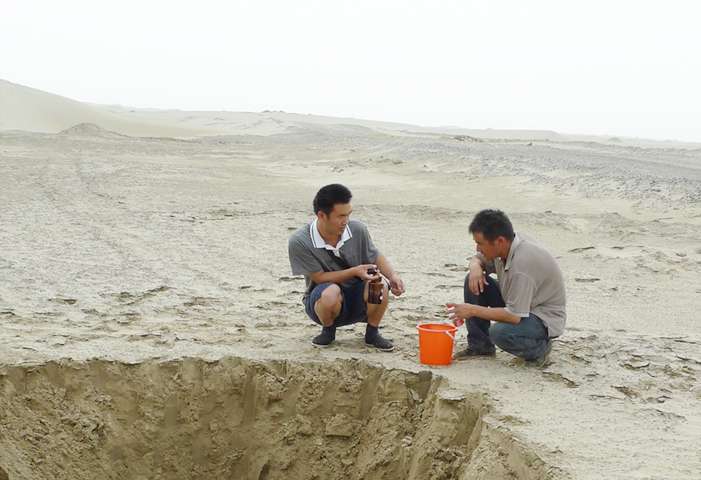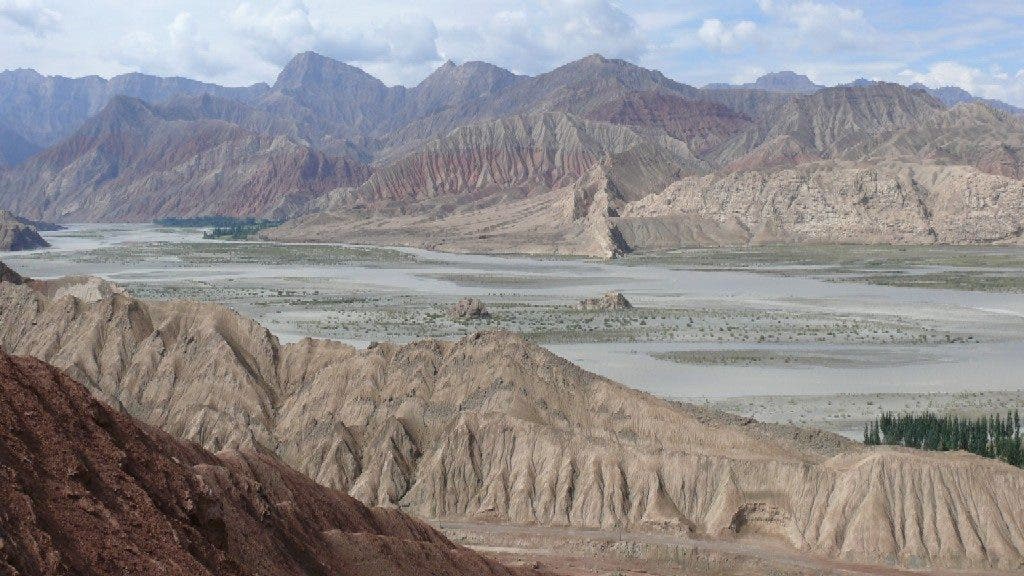Chinese researchers sampled water from an underground aquifer in the Tarim Basin and found these store vast quantities of carbon dioxide as a result of human activities. If the same holds true for all the desert aquifers around the world, the trapped carbon would amount to about a quarter more than the amount stored in living plants on land. Previously, the carbon trapped in aquifers was thought to be negligible. Clearly, this isn’t the case and these should not be disturbed so that the carbon doesn’t wash up into the atmosphere.
When fossil fuels are burned, 30% of the CO2 is trapped in the atmosphere where it heats it, 40% ends up in the oceans while the rest winds up elsewhere, mostly in plants which absorb it through photosynthesis. Not all CO2 taken up by plants is used and converted into sugars and oxygen. For a while, scientists have been trying to figure out where all the “leftover carbon” ends up in the planet’s system. One of these many places might be beneath the world’s deserts, according to Yan Li of the Chinese Academy of Sciences in Urumqi, China.
Li and colleagues sampled water from the Tarim Basin, a salty aquifer under a desert in north-west China, measured the carbon content and dated it. They then compared the readings with those of water that flows into the Tarim Basin from glaciers, and with water that is used to irrigate local farms, which comes from a nearby river. This helped to draw a timeline which tells us how much carbon got into the basin and when.

Chinese researchers analyzed the stored carbon in water running in underground aquifers beneath the Tarim Basin. The amount of carbon carried by this underground flow increased quickly when the Silk Road, which opened the region to farming, began 2,000 years ago. Credit: Yan Li
Over the past 8,000 years, the amount of carbon sunk into the aquifer has risen 12 times. This is intrinsically linked to human activities, particularly farming. In sandy soil, when plants soak up CO2, some of its leaches into the ground. Microbes that breakup plant nutrients also contribute. Because conditions are arid, desert farmers have to irrigate more, but the extra water dissolves the CO2 and deposits it in the aquifer below.
“The carbon is stored in these geological structures covered by thick layers of sand, and it may never return to the atmosphere,” said Yan Li, a desert biogeochemist with the Chinese Academy of Sciences in Urumqi, Xinjiang, and lead author of the study accepted for publication in Geophysical Research Letters, a journal of the American Geophysical Union. “It is basically a one-way trip.”
Collectively, the world’s underground desert aquifiers cover an area the size of North America and may account for at least a portion of the “missing carbon sink”. Knowing the precise location of these underground carbon sinks will thus prove extremely important to improve climate models. If the extent of the carbon trapping is really this large, then farmers could work together with authorities to manage the carbon that goes underground. For instance, the sinks could be exploited. The government could help farmers with subsidies so more land near deserts are farmed and more carbon is sequestrated to curve global warming.










